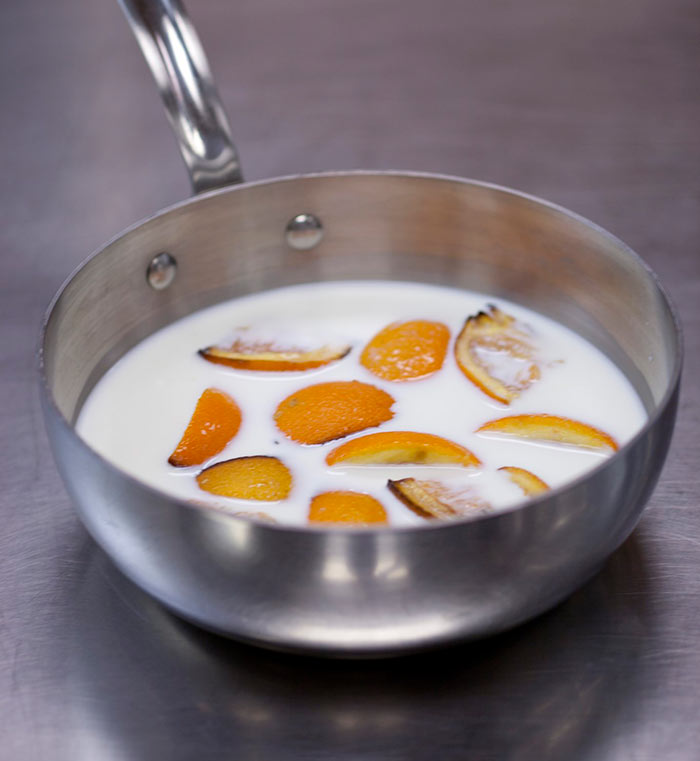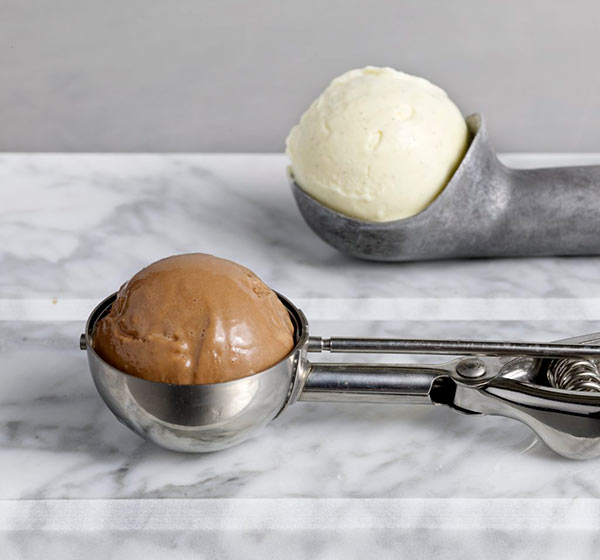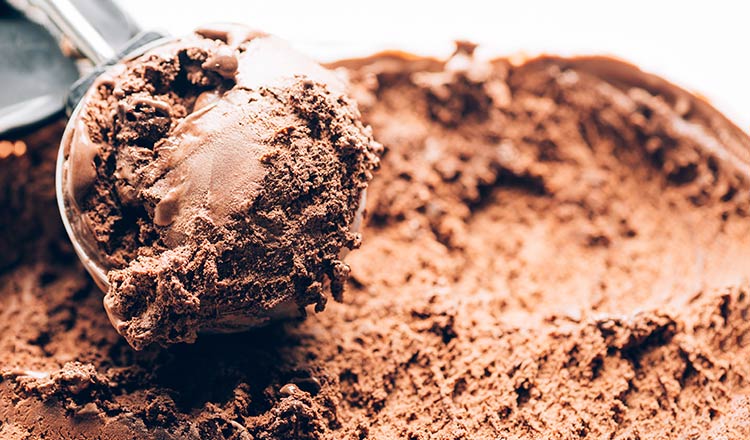As the summer settles in, there is no greater joy than a scoop of ice cream on a hot day. No matter your favorite flavor, from simple vanilla to the rockiest rocky road, an ice cream cone is the ultimate way to treat yourself.
Near our San Antonio campus, where I am based, we’re lucky to have some of the tastiest ice cream shops you can find. But to me, the very best ice cream is the kind you make at home. After all, with just a few simple ingredients, you can create any flavor your inner-child can imagine, or you can improve upon your nostalgic favorites with high-quality ingredients.
While there are many ways to make ice cream, an all-purpose custard base is a great starting point for just about any flavor combination. Custard-based ice creams are a quickly-cooked mixture of milk or cream, eggs, and sugar that makes a neutrally flavored base that is creamy and smooth thanks to rich egg yolks.
Flavoring this base can be as simple as adding extracts, like vanilla or mint. But because custards start by heating milk, we can use that opportunity to infuse fresh flavors into the liquid base. Before heating your milk, you can add a vanilla bean, cracked coffee beans or grounds, fresh herbs (real mint!), spices, food-grade florals, or other aromatics, like ginger or lemongrass.

After heating and steeping off the heat for about 20 minutes, strain the milk and continue preparing the custard as written. Try some of your favorite combinations, like basil and lemon or coffee and cinnamon.
During the summer, we have an abundance of fresh fruit—all of which are at home in your ice cream base. You can add fruit purées to your ice cream base before churning, or you can add bite-sized pieces of fruit to your still-soft ice cream, fresh from the ice cream machine. You can even stir in freeze dried fruit or powder for a pop of extra bold flavor and color.
Whichever method you choose, remember that most fruits are high in moisture. Excess moisture from fruit can make your ice cream icy rather than smooth and creamy. Once frozen, fruits may be bland and too hard to bite because they are so full of frozen water. Try one of these two methods to prevent iciness:
- Macerate your fruit by placing them in a strainer with a few tablespoons of sugar. Sugar draws water from the fruit, which will drain into the strainer below. You can then purée the fruit to add to the base, or toss the macerated fruit into the churned ice cream.
- Cook the fruit before adding to the ice cream. Combine the fruit in a skillet with a splash of water and a few tablespoons of water. Cook until the fruit has softened and the liquid is mostly evaporated. You can then purée the fruit to add to the base or stir into churned ice cream.
For chocolate ice cream, cook your ice cream base and immediately pour it over a bowl of finely chopped chocolate. Let the mixture rest for about 5 minutes to help melt the chocolate, then stir gently until it is smooth. You can use any type of chocolate you like, both milk or dark, and can add it to already-flavored ice cream for flavors like mocha or chocolate mint. Milk chocolate ice cream will be sweeter, and dark chocolate ice cream will be more chocolate-forward. Add about 4 ounces of melted chocolate to start, adding more if you like for a deeper flavor. For a super chocolate-forward ice cream, whisk a high-quality cocoa powder into the milk mixture before cooking.

Some ingredients are easy to melt into your warm ice cream base, like peanut butter, tahini, honey, chocolate-hazelnut spread, or jams, but these spreadable-at-room-temperature ingredients can also be swirled into your simple vanilla ice cream after its churned. The best way to achieve the perfect swirl is to transfer about 1/3 of your ice cream to the storage container. Add some of your swirl ingredient, then follow in layers until you’ve used all of the ice cream. Take a butter knife or other long tool, and swirl to distribute the flavors.
The fun in homemade ice cream is in experimentation, so if you don’t make your perfect flavor the first time, keep trying! Take notes so you remember what you’ve tried, and before the summer is up, you just might discover your new favorite.
April Goess ’21 is Director of Education at The Culinary Institute of America in San Antonio, Texas


